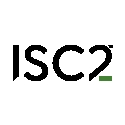- Level Foundation
- المدة 17 ساعات hours
- الطبع بواسطة ISC2
-
Offered by

عن
Welcome to Systems and Application Security Course! In the Systems and Application Security Course, you will gain an understanding of computer code that can be described as harmful or malicious. Both technical and non-technical attacks will be discussed. You will learn how an organization can protect itself from these attacks. You will learn concepts in endpoint device security, cloud infrastructure security, securing big data systems, and securing virtual environments. Objectives 1. Identify malicious code activity 2. Describe malicious code and the various countermeasures 3. Describe the processes for operating endpoint device security 4. Define mobile device management processes 5. Describe the process for configuring cloud security 6. Explain the process for securing big data systems 7. Summarize the process for securing virtual environmentsالوحدات
Untitled Lesson
25
Assignment
- Types of Malware
- Fundamental Concepts of Malware
- Malicious Activity Countermeasures
- Social Engineering Methods
- Behavior Analytics
- Industrial Control Systems (ICS)
- Host-Based Intrusion Prevention System (HIPS), Host-Based Intrusion Detection System (HIDS), and Host-Based Firewalls
- Application Allowed and Blocked Listing
- Endpoint Encryption, Detection, and Response
- Trusted Platform Module (TPM)
- Secure Browsing
- Mobile Device Use
- Containerization, Encryption, and Mobile Application Management
- Service Models
- Virtualization
- Legal and Regulatory Concerns
- Key Management and Storage Considerations
- Third-Party Outsourcing Requirements
- Shared Responsibility Model
- Hypervisors, Virtual Appliances, and Containers
- Storage Management
- Continuity and Resilience
- Threats, Attacks, and Countermeasures
- End of Course Quiz
- Final Assessment
10
Videos
- Malware Attackers
- Endpoints
- Security Strategies for Endpoints
- The Five Essential Characteristics of Clouds
- Virtualization
- Essential Requirements in P&DP Laws
- Application of Defined Controls for Personally Identifiable Information
- Virtual Machines
- Threats, Attacks, and Countermeasures
- Virtualization Attacks
55
Readings
- Protecting the Viability and Success of the Organization
- The Software Environment: Systems and Application Security
- Development Time vs. the Impact of Errors
- Data Security: The Threat Perspective
- Types of Software and Threat Vectors
- Types of Malware
- Rootkits
- Web Application-Based Vulnerabilities
- All-Source Intelligence
- All-Source Intelligence Considerations
- External Threats from Media
- Fundamental Concepts of Malware
- Antimalware Products and Services
- Types of Malware Countermeasures
- Types of Malicious Activity
- Malicious Activity Countermeasures
- Social Engineering Methods
- Behavior Analytics
- Supervisory Control and Data Acquisition
- Industrial Control Systems (ICS)
- Host-Based Intrusion Prevention, Intrusion Detection, and Firewalls
- Application Allowed and Blocked Listing
- Endpoint Encryption, Detection, and Response
- Trusted Platform Module (TPM)
- Secure Browsing
- Mobile Device Use
- Remote Working
- Bring Your Own Device (BYOD)
- Containerization, Encryption, and Mobile Application Management
- The Cloud (Simplified)
- Deployment Models
- Service Models
- Legal and Regulatory Concerns
- Legal and Privacy Concerns for Cloud-Hosted Data
- Data Protection and Privacy: Regional Considerations
- Global Considerations
- Data Discovery
- Cloud Storage: Data Dispersion and Data Loss Prevention
- Cloud Security Alliance Cloud Control Matrix
- Cloud Encryption Challenges
- Key Management and Storage Considerations
- Third-Party Outsourcing Requirements
- Shared Responsibility Model
- Risks to Virtual Machines and Virtualized Environments
- Hypervisors, Virtual Appliances, and Containers
- Storage Management
- Continuity and Resilience
- Host Security Considerations
- Firewall and Router Testing
- Security Monitoring Testing
- Network Strategies
- Virtual Machine Security
- Management Systems and Hypervisor Security
- Key Takeaways
- Systems and Application Security Terms and Definitions
Auto Summary
"Systems and Application Security" is an IT & Computer Science foundational course focusing on mobile and cloud data security. Taught by a Coursera instructor, it covers malware types, countermeasures, host-based security systems, endpoint encryption, and cloud security models. The course, part of the SSCP specialization, requires no prior experience and offers comprehensive learning over 1020 minutes. Subscription options include Starter and Professional, ideal for beginners seeking to enhance their cybersecurity knowledge.

Instructor
ISC2 Education & Training


